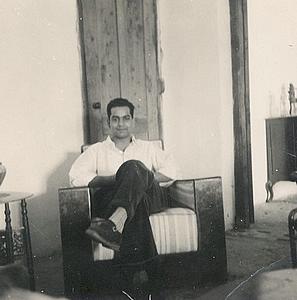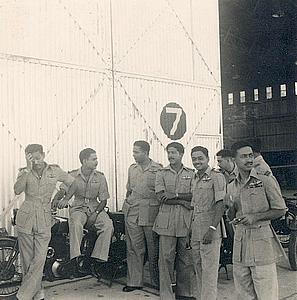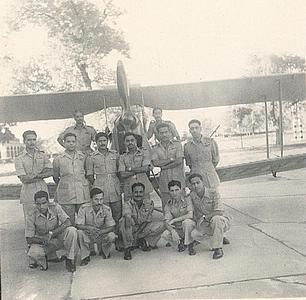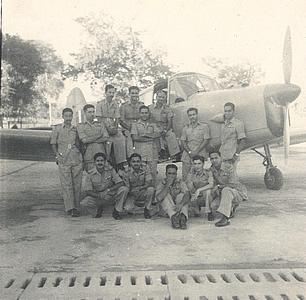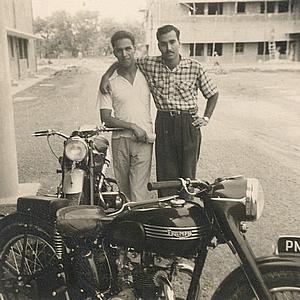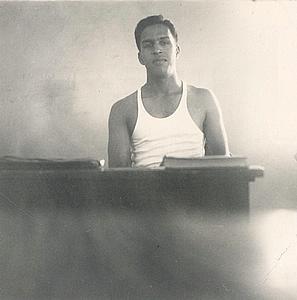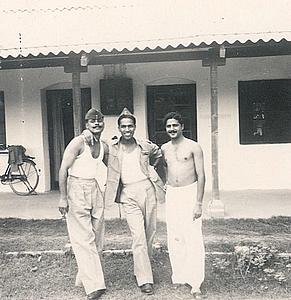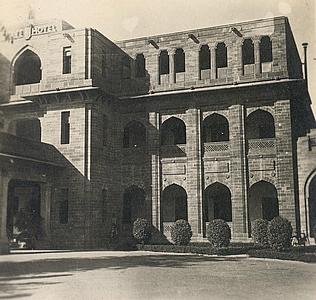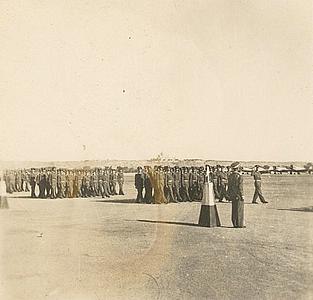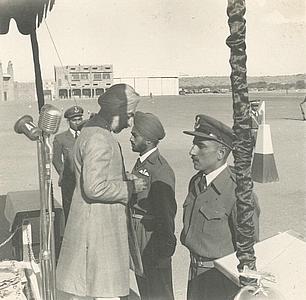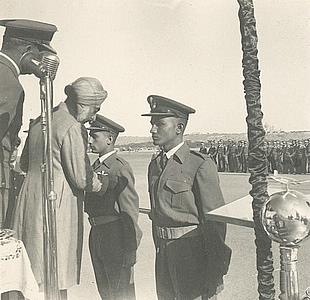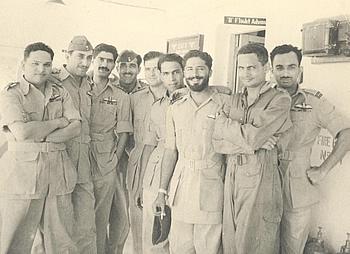Air Marshal Raghavendran writes this article covering some eventful times as a Flying Instructor, with unintended consequences during a later posting as a Squadron Commander.
Air Marshal Raghavendran writes this article covering some eventful times as a Flying Instructor, with unintended consequences during a later posting as a Squadron Commander.
This was in the Year of Our Lord 1953, while I was a flying instructor in No 2 Air Force Academy at Jodhpur.
But as background to the court martial, I have to go back and tell you about my Flying Instructors’ course. I had hardly been in my first squadron (No 4) for a year and a half when I was detailed for the Flying Instructors’ course, at the Flying Instructors’ School (FIS), then in Ambala. I was very upset because I had hoped for many more years in the squadron, followed by promotions to flight commander, squadron commander etc. My reaction was ‘Why me’, when there were more senior people in the squadron, some of whom were keen to do this course as they could then devote their careers to flying instruction, which had its own attractions and was easier on the families.
At my farewell party I was practically in tears. I made a maudlin speech and got a pair of cuff links as a farewell gift.
Flying Instructors’ School, Ambala
So I landed up at the FIS in Ambala on 10th May 1952, once again at that premier station which I had left only a year and a half before. Back then it had housed the Advanced Flying School (AFS), and the fighter training school called the Conversion Training Unit (CTU). Both these units had now moved out. The AFS had been split and sent to Begumpet (Hyderabad) and Jodhpur, to form the two Air Force Academies of the time. The CTU had moved to Hakimpet (also Hyderabad), and new Dassault Toofani fighter squadrons had moved into Ambala. There was also a Spitfire squadron commanded by Sqn Ldr Randhir Singh.
While the North American Harvard IIB aircraft of AFS were being ferried to Jodhpur, we had an unthinkable situation. A formation, consisting of one flying instructor and two other pilots who had been on ground duties at Ambala, got lost and landed in Pakistan. It took a long time to live that down.
Once I reached FIS I wasn’t so depressed, as there were two budding instructors junior even to me, NF “Stumpy” Watts and Jag Mohan “Jaggi” Nath, and one more from my course, junior to me (but five years older!), Guy McKenzie.
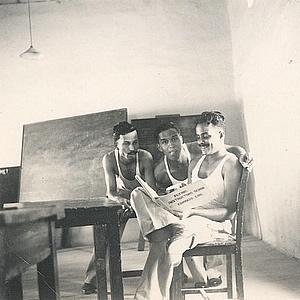
|
Guy Mckenzie, Self and Dandu Dandapani. We were probably trying to get some knowledge into Dandu’s thick head |
| My friend Jagginath at Ambala. | 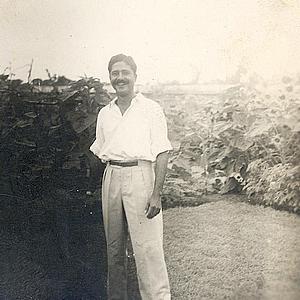
|
Stumpy’s nature belied his appearance, short and very innocuous-looking with a very calm demeanour. He had an amazing sense of humour and was very gutsy. We were to share many adventures together.
There were three types of aircraft in the FIS: the Percival Prentice and the de Havilland Tiger Moth, both basic trainers; and the North American Harvard IIB, an advanced trainer. It was interesting to learn how to teach cadets flying when you were not quite sure whether you yourself were learned enough on the subject. All instructional monologues (known as ‘patter’) started with the phrase “Today I am going to teach you how to … <Whatever> … with safety and confidence”. So, I decided that the least I could do was to tell myself that I was going to “be an instructor, with safety and confidence”.
My own instructors on the course were Brian Cannel, who later on retired and went to Australia, and ‘Josh’ Joshi. Joshi also retired as a Wing Commander, went on to crop dusting, and remained a bachelor. The CO was Sqn Ldr Jaspal Singh, who took a great liking to me and continued to give me helpful advice during my career after the course. He retired as an Air Commodore, after commanding Air Force Station Agra. With his turned-up moustache he resembled the picture of a pirate on the label of a brand of scotch available at the time; he used to be referred to as “The Old Smuggler”.
Learning the instructional patter and coordinating the patter with action in the aircraft was quite tricky at first, but we learned it all. After the instructor had given you the initial demonstration we had to go for ‘mutual flying’ with another Under Training instructor and practice the patter. That was the enjoyable part, because you could then enjoy yourself throwing the aircraft around and take liberties with it that you could not do with fighter aircraft.
The Bunt Club
We had heard that there was an elite group of three or four pilots in Jodhpur called the “Bunt Club”, who had successfully bunted their aircraft – that is, carried out the second half of an outside loop. In the Bunt, you pushed the nose down, past the vertical and still further, until you were in horizontal inverted flight, and came out on the other side and rolled it out. We knew this was prohibited, going by the book, but if they could do it in Jodhpur why couldn’t we in Ambala?
The first time I tried it out was with Stumpy Watts in a Harvard. We had decided that we wouldn’t try to bunt the Prentice, because it was a very sluggish aircraft to start with, and we weren’t sure how much negative g it could take. We had learned in the Harvard instructional book that it was stressed up to -2g and we just hoped that we would not exceed that.
We got the aircraft to nearly stalling speed and pushed the stick forward. We had to get the speed down before starting, as we could otherwise build up to too high a speed at the end of the bunt. The nose went down slowly and then when it got just past the vertical didn’t seem to want to go any further. It was really scary. We thought our time had come and we were going into the ground, slightly inverted!! I remember Stumpy saying “Oh s**t, I think we have had it”!! There was nothing we could do except keep the control column fully forward and hope for the best. It was even scarier because we were literally floating in the air, in spite of having tightened our straps, and our feet couldn’t reach the rudder pedals.
We came through, obviously. We only realized later on that the rate of rotation of the aircraft when you pull back on the stick is much more than when you push forward, because the available elevator movement is much less when it goes down than when it goes up. Also our speed was pretty low to start with and so the rotation would be slower. Any way, it was a great thrill and we didn’t exceed the limits of the aircraft.
We did try it again on the Tiger Moth, and it was even scarier because it had an open cockpit and the strapping system was really primitive. During the bunt we were more outside the aircraft than in.
Most of the U/T instructors didn’t engage in this escapade, perhaps out of wisdom, or simply a compelling drive to live longer, in the bosom of their families. Thinking back now, the couple of us who tried it on the Tiger Moth must have been stark raving mad – imagine bunting a biplane with wings made of plywood and fabric, and held together by wires!! I doubt that the designers of the Tiger Moth, in the early 20th century, thought about positive loads, let alone negative. But obviously, one didn’t have to pull too much g on the Tiger Moth to do anything.
We had a Liberator pilot from Bombay on the course, who was neither knowledgeable nor interested. He was asked in the Principles of Flight class to explain Bernoulli’s Theorem. He asked, “Isn’t that the ice-cream guy in Bombay?”
I made some life-long friends on the course – Jaggi Nath and “Dandu” Dandapani.
I managed to win the Majithia Trophy, which is awarded to the pilot who came first in the Flying Instructors’ course, and was posted to No 2 AFA at Jodhpur.
Instructional Duties, Jodhpur
Jaggi and I were posted to instruct at Jodhpur, and Dandu went to Begumpet. At Jodhpur, new instructors were normally assigned to the squadron teaching on Basic aircraft, but since there was a shortage of instructors in the Advanced squadron, Jaggi and I got assigned there instead. We liked that because the Harvard was so much more fun to fly and teach in.
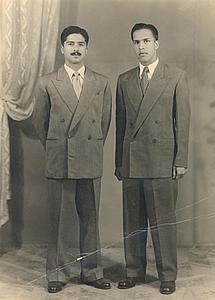
|
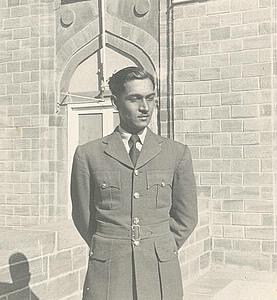
|
|
| Jaggi Nath and Self got posted to Jodhpur on completion of the FIS training | One of my first pupils- ‘Gabbu’ Sen, retired as an Air Marshal. |
My first pupils were Gandharv “Gabboo” Sen, Chakraborty and PB Menon. Gaboo Sen went on to become an Air Marshal; Chakraborty and Menon both went to the transport stream and later on went to Air India. There were only three months left for that course to pass out, and after that I continued assigned to the Advanced squadron.
I was a full-fledged member of the Bunt Club (around five people, I think) and there was not much that we couldn’t do with the Harvard. Not only did I fly with my pupils but with some of the other instructor’s pupils also, because they felt that flying with me would improve their aerobatics.
Some of my pupils were good, but I had to work with one who used to regularly get airsick whenever we did aerobatics. For service flying he had to come up to at least a minimum standard in aerobatics. With a lot of hard work all around, we managed to get him to that level.
Maintenance of the aircraft at Jodhpur was carried out by personnel of Hindustan Aircraft Ltd (HAL) (now Hindustan Aeronautics Ltd). They got assessed by the number of inspections they did. When they got an aircraft ready for air test, after inspections, they often had a problem in finding an instructor to carry out the air tests and clear the aircraft quickly. They were on a good net with me because many of them were Tamilians and they felt that I was one of them. They used to ask me to do air tests and I never refused, morning, noon or holiday. Most of the other instructors were not interested, and so I clocked up a lot of additional flying that way.
One bonus was that I also got to fly the only Spitfire XVIII on the station. Nobody knew why or how it was there and the HAL servicing crew had apparently been told to keep it flying by putting it on the line once a month. Only two people were on the look-out to fly it, Squadron Leader Ronnie Engineer and me. The flight had to be authorised in the Chief Instructor’s Authorisation Book and, whenever possible, I would ‘liase’ with the servicing crew, quietly put it in the book, get it signed by Wing Commander ED Masillamani, the CI, and fly the lone sortie for the month. But I couldn’t always smuggle it past Ronnie, who sometimes beat me to it; but then I would get the servicing crew to let me fly a second sortie. Nobody else seemed to be in a tearing urge to fly it, and so it wasn’t a great competition.
For these reasons and many others, I had a lot of opportunities to hone my flying. I was proud of my slow roll, precision eight-point roll, stall turn, and smooth roll off the top. I was considered a regular ‘hog’ in flying every month, sometimes flying twice as much as the other instructors.
| Instructors: Tolly D’souza (died shortly after this picture), Zeke Ezekiel, Mohan, Jimmy Goodman, Cas Castellino, Duggy Menezies. Sitting: Jagat Lowe, Natha Singh Bajwa, Reggie Sayce | 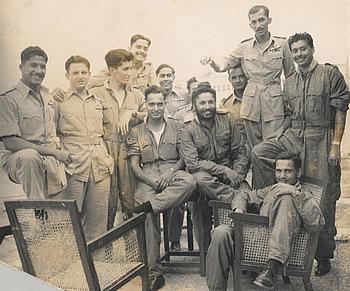
|
Low Flying
The time I was spending in aerobatics and low flying was particularly noted by other instructors, many of whom would want to fly with me to see what it was like. In low flying the most thrilling thing was to approach a tree, not many of them around in Rajasthan and not very tall, at high speed and, at just the right moment, kick the rudder and just about skid around the tree. We would be too low to bank and turn. Some of the more sedate pilots would come back a bit shaken.
A thing that bothered me was the number of young pilots we had lost due to doing low flying without adequate preparation. Low flying was restricted at this stage, and young pilots would do it on an impulse, without enough exposure. Because it was restricted there was no provision for a methodical, informed approach, such as first practicing at safe heights, learning the techniques and pitfalls, and then gradually coming lower. So, I made a point of teaching exactly that. I taught the pilots what 300 feet looked like, pointed out the key points to bear in mind such as losing height in a turn without realizing it, getting hypnotized by the ground flashing past below, looking out for high tension wires etc. I would go down to 200 feet and then tell them not to go below that ever, and if they did to make sure that they kept in mind the things I taught them. You may be sure that the line of cadets wanting to learn all this was long!!
One afternoon, I was on an air test with a cadet called Dewan – he happened to be Jaggi Nath’s nephew. After the testing part of the flight, I was teaching him the technique of low flying, along the Luni River as it had no obstructions and wound around nicely to make flying interesting. I suddenly felt as though somebody was watching me. I pulled up a little bit and looked around and saw, at a distance, one of the yellow-painted Douglas Dakota aircraft of the Navigation School, also at Jodhpur. I could almost feel two bulbous eyes peering at me from the aircraft. So I climbed up, got to height, did some aerobatics and came back and landed.
When I parked the aircraft, I found a full reception committee waiting for me: the Chief Instructor, Wg Cdr Masillamani; the Chief Flying Instructor of my Squadron, Sqn Ldr Ronnie Engineer; the Station Adjutant and the CFI of the other Squadron, Squadron Leader HC ‘Cut Lip’ Chopra. The pilot of the Dakota had been the Station Commander himself, Group Captain HC Dewan, who had been returning from a trip to Delhi. Immediately on landing he had called the supervisors to confront me; the Station Adjutant to give me the letter saying a Summary of Evidence (the prelude to a Court Martial) had been ordered against me; and had detailed the most vindictive, misanthropic officer on the station, known for his fondness for crucifying his juniors, to carry out the Summary of Evidence against me.
The Station Commander was known as “Happy Harry”, because of his somewhat doleful mien and voice. He was known as a very strict disciplinarian who didn’t pull his punches. In the short time he had been the Station Commander, he had fairly terrorized the Station, but I cannot say unfairly.
Unfortunately, this was not the first time I had fallen foul of the Station Commander. On the days when we had night flying, it was incumbent that all aircraft were air tested for full serviceability and for the functioning of the night flying systems such as cockpit lighting, landing light etc, before the night flying actually started. So all the instructors would assemble early, and the Flight Commander would assign aircraft to each of us to do an NFT, as it was called. It was a hurried job as we had to come back, brief our pupils, and get airborne on time, all to a very tight schedule. So we all tended to taxi fast, to and from the runway. On two occasions when the Station Commander had occasion to be around to watch the proceedings and noted the fast taxiing, the only aircraft number that he could note turned out to be mine. I had been told by the CFI, Sqn Ldr Engineer, to look out or else!! And now, here was worse.
All that night, I saw visions of being under close arrest during my Summary of Evidence and Court Martial, loss of seniority, posting to the boondocks etc. I couldn’t sleep, of course. The morning would probably see me formally under arrest.
The next morning I was summoned and told that the Station Commander wanted to see me. Very ominous!! I was ushered into his office. It was the first time I was seeing him at close quarters. He seemed even more doleful and threatening than I had imagined. I stood at attention in front of him, expecting the worst. Unbelievably, he said, “The Chief Instructor tells me that you are a good pilot and instructor and that I should let you off without a Court Martial”!!
Our Chief Instructor, Wg Cdr Masillamani, was an amazing personality. One of the most renowned pilots of the Indian Air Force during the Second World War, he and Wing Commander Murkot Ramunny , flying for No 6 Squadron, the lead Allied reconnaissance squadron during the Second Arakan campaign, had been known as “The Eyes of the Indian Air Force”. His skills even in those days at low flying were legendary. He had flown with me, as is the wont of CIs, a few days before to check out my flying and instructing skills. Then he had taken me down and showed me some low flying!! I have never seen anybody so relaxed and laid back flying at tree-top height. He had handed over controls to me at that height and watched my abilities to do the same. He had made no comments after the sortie but thank God for that flight – clearly he had been favourably impressed. Also, I had mentioned to him as to why I had been doing low flying, precisely to prevent young pilots from dying while doing impromptu low flying. He may have questioned Cadet Dewan.
I learned later that Wg Cdr Masillamani had cornered the Station Commander the first thing in the morning, and told him that I was very good material for the future and that I should be given some other salutary punishment and let off.
So Happy Harry looked at me and said, “If I give you some other punishment will you abide by it and behave yourself?” I nearly fell at his feet, but said in the most impressive military voice I could summon, “Definitely, yes sir”. He grounded me for three months, made me the Catering Officer for the airmen’s mess (a most frustrating and petty job), made me one of the Air Traffic Control officers, and decreed no leave for the year.
I somehow put up with it for two months and then asked for an interview with the ogre and pleaded with him to let me get back to flying. He looked at me with his sad eyes and agreed to let me return to flying, but added that I would have to continue for another month as the catering officer. “And I don’t want to see Mr Raghavendran on a flying discipline case again.”
Life in Jodhpur thereafter was great. I made life-long friends there, then – Flight Lieutenants VY Nehru and “Beejay” Bajaj. There were very few married officers and our life centred around flying and the Officers’ Mess. The town was just a congested village (as it was even in 1984, when I went back as the Air Officer Commanding-in-Chief of South Western Air Command). About six of us had motorcycles and every weekend we would pick up some food and drinks from the Mess and go off to one of the lakes around and have a grand picnic. The quota per head was one bottle of liquor. There was no time for any drinking on week-days. So we made up for it in the weekends. All of us survived our outings. One person, Flight Lieutenant Goswami, went to town on a week-day, and on the way back hit an electric pole while taking a turn and died.
During this period we had the interesting episode of the CFI doing a wheels-up landing on the deserted satellite airfield of Salawas. This field was used for demonstrating practice ‘forced’ landings. It was strictly forbidden to land off a practice forced landing, though some of us did it to show off to the pupils our fine judgement in executing the forced landing. Ronnie did it one day but decided a bit late to land and forgot that he had not lowered his wheels!! So we had the ignominous situation of the CFI having done the unmentionable. But he was very nice about it and called all the instructors and admitted what an ass he had been. I believe he got away with it as he was immensely popular with the cadets, instructors and above all with the hierarchy. I think it was accounted as a practice forced landing where the engine failed to pick up on going round!!
Soon afterwards I got posted to No 1 Air Force Academy, in Begumpet, after having spent just about a year in Jodhpur. I said thanks and good bye to my saviour, Wg Cdr Masillamani (in Tamil his name means a flawless jewel), and left. I was too low in the totem pole to meet the Station Commander and, in the heat of the moment, felt it a ‘Good riddance’.
Later Encounters, Poona
But alas! Six years later, on 15 April 1959, when I took over command of No 23 Squadron in Poona, Happy Harry took over the station on the same day from Air Commodore Minoo Engineer. To say I was perturbed would be an understatement. So, in my usual fashion, I marched into his office the same day, as I had just flown down in a Hawker Hunter from Ambala to take over the squadron, and was going back the next morning. I told him, “I am not the same immature flying officer you knew in Jodhpur. I would like to start with a clean slate, and you can judge me by my performance”.
He looked at me with his doleful eyes and said, “All right Mr Raghavendran, we will see”. He stuck to his word. That is another story.
Copyright © Air Marshal S Raghavendran . All rights reserved. Reproduction in whole or in part in any form or medium without express written permission of Air Marshal S Raghavendran is prohibited.
